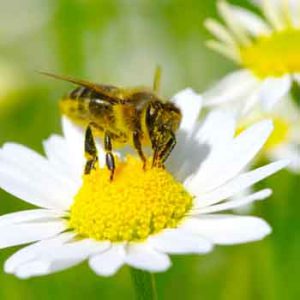
More evidence that low-calorie sweeteners are bad for your health
Studies show that artificial sweeteners can raise the risk of hypertension, metabolic syndrome, type 2 diabetes and heart disease, including stroke.

Natural Health News — Exposure to neonicotinoid treated oilseed rape crops has been linked to long-term population decline of wild bee species across the English countryside, according to new research.
The study, led by the Centre for Ecology & Hydrology and published today in Nature Communications, examined changes in populations of 62 wild bee species alongside oilseed rape cropping patterns across England between 1994 and 2011 – the time period spanning the introduction of wide-scale commercial use of neonicotinoids.
The scientists found evidence suggesting that neonicotinoid (‘neonics’) use is linked to large-scale and long-term decline in wild bee species distributions and communities.
The decline was, on average, three times larger among species that regularly feed on the crop such as Buff-tailed bumblebee (Bombus terrestris) compared to species that forage on a range of floral resources, indicating that oilseed rape is a principle mechanism of neonicotinoid exposure among wild bee communities.
» A new large-scale analysis of wild bee populations between 1994 and 2011 has found that species foraging on neonicotinoid-treated crops have experienced much more severe population declines than species foraging on other plants.
» The results will form part of an evidence review of the risks neonicotinoids pose to bees, currently being undertaken by the European Food Standards Authority.
» The researchers say the effect of neonicotinoids is amplified by other environmental pressures including habitat loss and fragmentation, pathogens, climate change and other insecticides.
Neonicotinoids are a group of insecticide which can be applied to seed prior to planting. The active compound is circulates throughout the growing plant and as such can lead to potential ingestion where pollinators feed on the pollen and nectar of treated crops.
These findings add to previous small-scale and short-term exposure studies which have identified negative effects of neonicotinoids on honeybees and a limited number of commercially-bred wild bee species.
20% decline in some populations
For five of the species investigated, including the spined mason bee (Osmia spinulosa) and the furrow bee (Lasioglossum fulvicorne), neonicotinoid use was judged to be responsible for at least 20% of local population extinctions of wild bees.
According to the researchers, the data suggest that neonicotinoid use is correlated with wild bee biodiversity losses all over the country and has implications for the conservation of bee communities in intensively farmed landscapes.
The results add to an extensive body of evidence in a major review of the risks neonicotinoid pesticides pose to bees, currently being undertaken by the European Food Standards Authority and anticipated to be complete by January 2017.
Lead author, Dr Ben Woodcock, said, “As a flowering crop, oilseed rape is beneficial for pollinating insects. This benefit however, appears to be more than nullified by the effect of neonicotinoid seed treatment on a range of wild bee species.
Dr Woodcock adds that the effect of neonicotinoids is amplified by other environmental pressures including habitat loss and fragmentation, pathogens, climate change and other insecticides.

Please subscribe me to your newsletter mailing list. I have read the
privacy statement